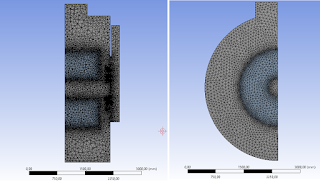Many of the problems that are modeled in CFD today concern multi-layer objects. It often happens that these models have large sizes and thin layers. Due to this specificity, we have certain conduction properties in various directions of solid body. Drawing such models in the 1: 1 scale causes many problems, primarily related to the generation of a very large number of finite elements. Sometimes the computer hardware parameters do not allow us to perform such an analysis.
 |
| Cyl-orthotropic in Ansys Fluent |






















